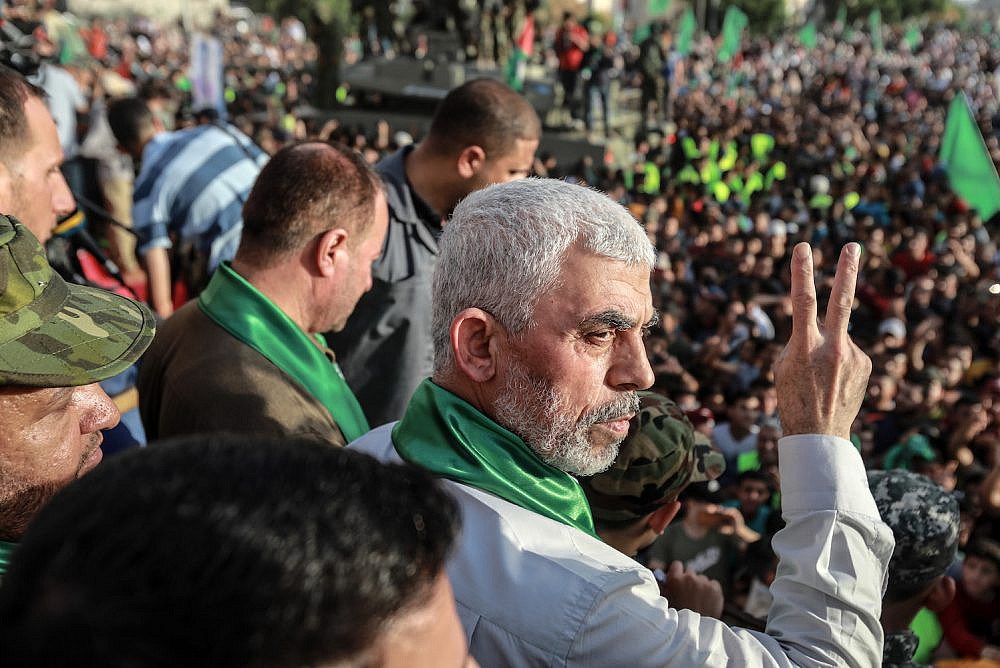Hamas leader Yahya Sinwar and his intelligence personnel did not need to tune in to Channel 12, Israel’s most-watched television channel, on Friday evening in order to understand which way the wind is blowing in Israeli politics. They had likely already read veteran Israeli journalist Ron Ben-Yishai on Ynet, a popular Israeli news site, whose article initiated the renewed push to kill the Hamas leader. Just days later, Channel 13 ran a a poll in which Israelis were asked whether Sinwar should be assassinated. Nearly 60 percent answered in the affirmative, 20 percent said no, and 21 percent said they didn’t know.
According to Ben-Yishai, Sinwar is intentionally pursuing a strategy of igniting a regional religious war, similar to how Yasser Arafat sparked the Second Intifada. In order to avoid this, Israel needs to choose between assassinating Sinwar or destroying Gaza’s infrastructure. This violent debate quickly made its way into Israel’s mainstream media and politics.
From his diagnosis to his prescription, there is not a single one of Ben-Yishai’s assumptions that cannot be refuted, or at least seriously questioned. What’s more, his proposed solution has already been tried on Arafat. Former Israeli Prime Minister Ariel Sharon organized an operation to assassinate him, and only President George W. Bush prevented it from being carried out. Instead, Arafat was put under physical siege, which may well have hastened his death.
The Palestinian Authority establishment that Arafat led was destroyed in Operation Defensive Shield in 2002, when the Israeli army directly re-occupied the cities of the West Bank during the height of the Second Intifada. In its wake, Israel permitted the Palestinian Authority to be built anew, this time under Mahmoud Abbas, provided it would operate as a subcontractor of the occupation on Israel’s behalf. Meanwhile, the drastic harm Israel has done to Gaza’s residents, and its recurring, systematic destruction of the strip’s infrastructure, do not need spelling out. Ben-Yishai’s article actually testifies to the “success” of these actions.
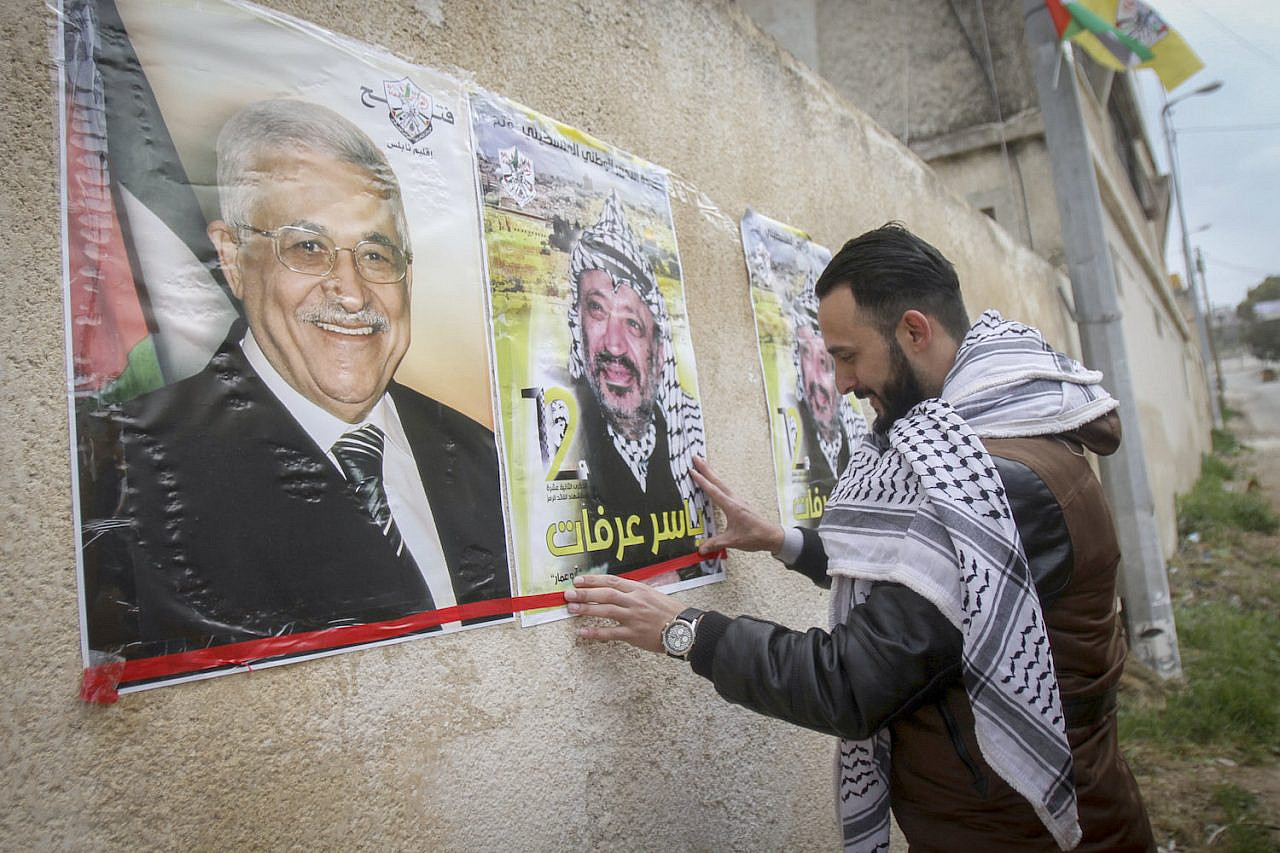
It is important to stress that the problem isn’t confined to Ben-Yishai’s personal stance — it can be found throughout Israel’s political and security establishment. It is an approach that suffocates new thinking, while anger at severe Palestinian terrorism is linked to a political and leadership crisis, and short-sightedness. To these must be added the considerable frustration of the stronger side, when it becomes clear that the use of force does not bring the expected results.
There is a vague feeling in the air — albeit one that is repressed and denied — that something has nevertheless shifted in the basic parameters of the conflict over the past few years. I will summarize these changes in the context of the recent acts of terrorism as well as the “Guardian of the Walls/Sword of Jerusalem” operation in May 2021.
Contrary to the perception that one man, Sinwar, is orchestrating the conflict — and that Hamas is responsible for the clashes in Jerusalem and among Palestinian citizens of Israel — Hamas is, rather, trying to capitalize on the unrest caused by Israel’s actions at Al-Aqsa Compound. The flying of the Hamas flag and the praise for Sinwar seen there are a demonstration of support for taking a hard line against Israel, in contrast to the submissiveness and inaction on the part of Abbas.
This bubbling-over is authentic and bottom-up, and not the result of incitement: the Palestinians reject Abbas more than they are attracted by Hamas. In fact, it is a direct result of the governments of Benjamin Netanyahu and Naftali Bennett not enforcing Netanyahu’s own public commitment that Jews will not pray on the Temple Mount/Haram al-Sharif.
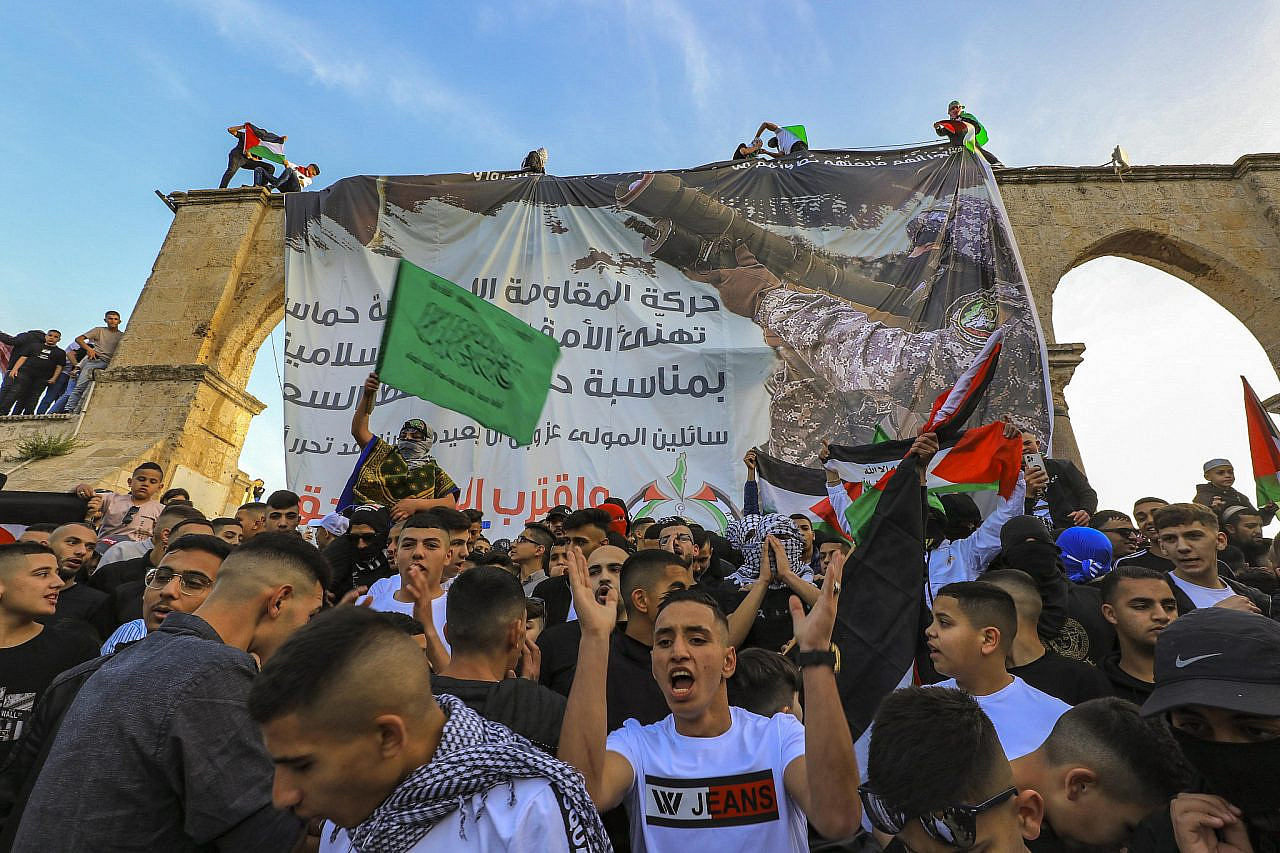
An Israeli Democracy Institute survey published last week reveals that a majority of Israelis believe the government should impose Israeli sovereignty over the Temple Mount and permit Jews to pray there. This is a significant achievement for the Temple Mount Movement, a term for various extremist Jewish groups who seek to overturn the long-standing religious status quo and “restore” Jewish sovereignty over the mount. As can be seen in photographs of Jewish worshipers and visitors to the complex, Haredi Jews, as opposed to national-religious Jews, are by no means a negligible minority among them.
This is not the same as tourists who happen to be Jewish visiting the Temple Mount, as happened in 1967. Jewish visitors, almost all of them religious, are perceived in Arab media as settlers — the engine that drives the expansion of Israeli sovereignty. The Temple Mount is where Jewish ritual, Israeli territorial expansion, and crude nationalism meet.
In other words, the focal point of the Israeli-Palestinian conflict is not the Gaza Strip, but rather Jerusalem and the Temple Mount. The latter has always been the symbolic center of the conflict, but now it’s also the active center, and is spreading from there to cities across Israel.
Contrary to the perception that the clashes in the so-called mixed cities and Arab communities in Israel are connected only at the margins to the West Bank and the Gaza Strip, by way of “radical Islam,” this is a fundamental shift. From the colonial fringes of Israeli expansion — the hilltops of the West Bank — the center of the conflict has transferred to the country’s capital and to major cities within the Green Line.
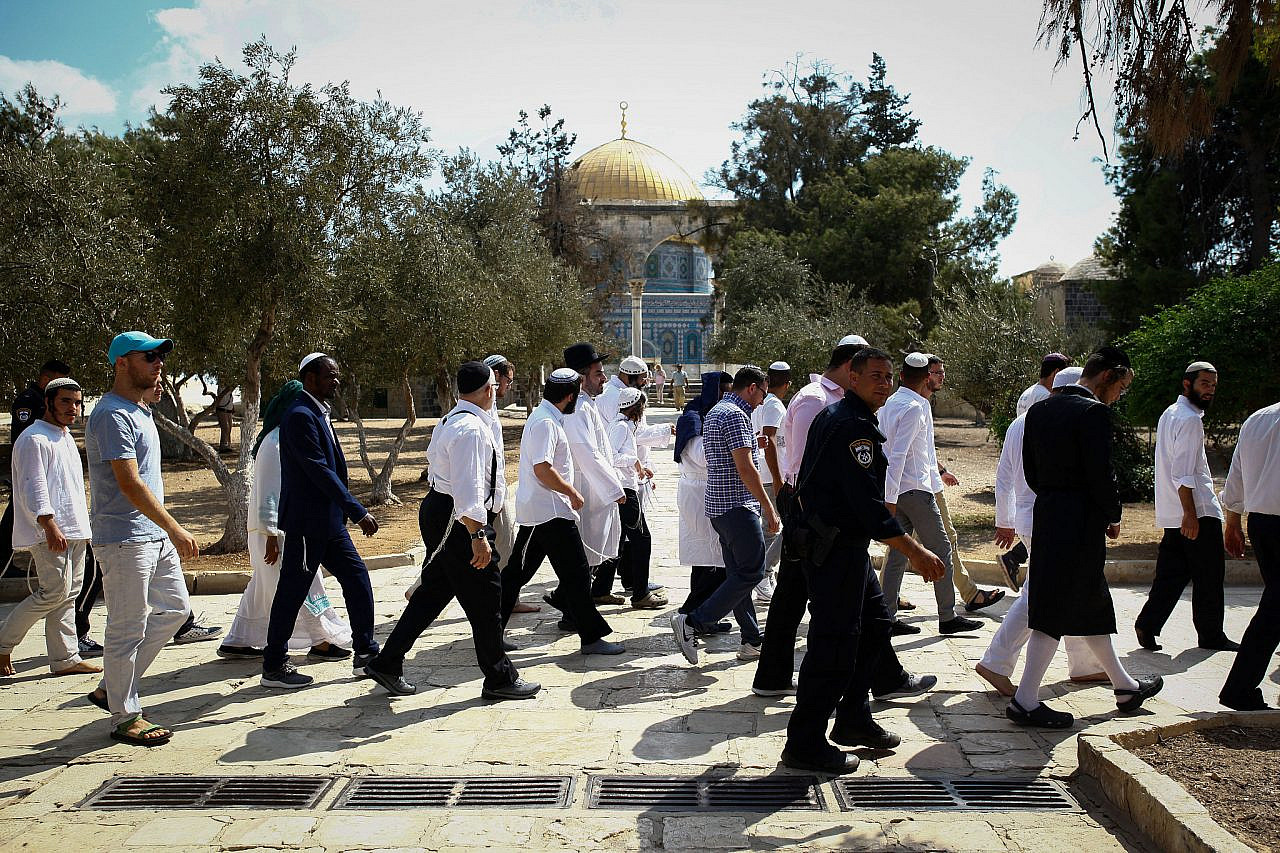
In previous years, the geographic and political fragmentation of Palestinians that Israel aimed to exacerbate was unable to prevent a unity of vision and symbolism among Palestinians in the West Bank, in Jerusalem, inside Israel, and in the Gaza Strip. But in reality, each community had its own priorities, which determined what to do in the here and now.
These divisions persisted so long as Israel did not lose its majority between the river and the sea, as long a single, Israeli regime was not established in that area, and as long as there was hope for a border between the 1967 Palestinian territories and the 1949 sovereign State of Israel territories.
Israel’s hope of maintaining this reality evaporated with the expansion of the settlements and their de facto annexation. The geographical divide between territories with differing legal statuses has collapsed. In its place is an ethnic divide, more entrenched than before, between Jews and Palestinians throughout the whole land.
This process has had a direct impact on Palestinian citizens of Israel. They are integrated into the majority-Jewish society, yet are also rejected by it — owing to the fact that the ethnic basis of the state has been strengthened considerably, at the expense of the limited civic foundations offered to Palestinian citizens.
The younger generation of Palestinians in Israel is middle-class, educated, and opinionated. They stand tall in their Palestinian identity and demand equality based on their citizenship — and not as a gift of kindness from the majority. As much as Palestinian citizens of Israel are rejected by their Jewish fellow citizens, who fear the loss of hegemony, the former also identify with their own people . Through the narrow political interests of the Arab parties, it is possible to identify this pendulum swinging within Ra’am, the Islamist party that is part of the current coalition, and between Ra’am and the Joint List.
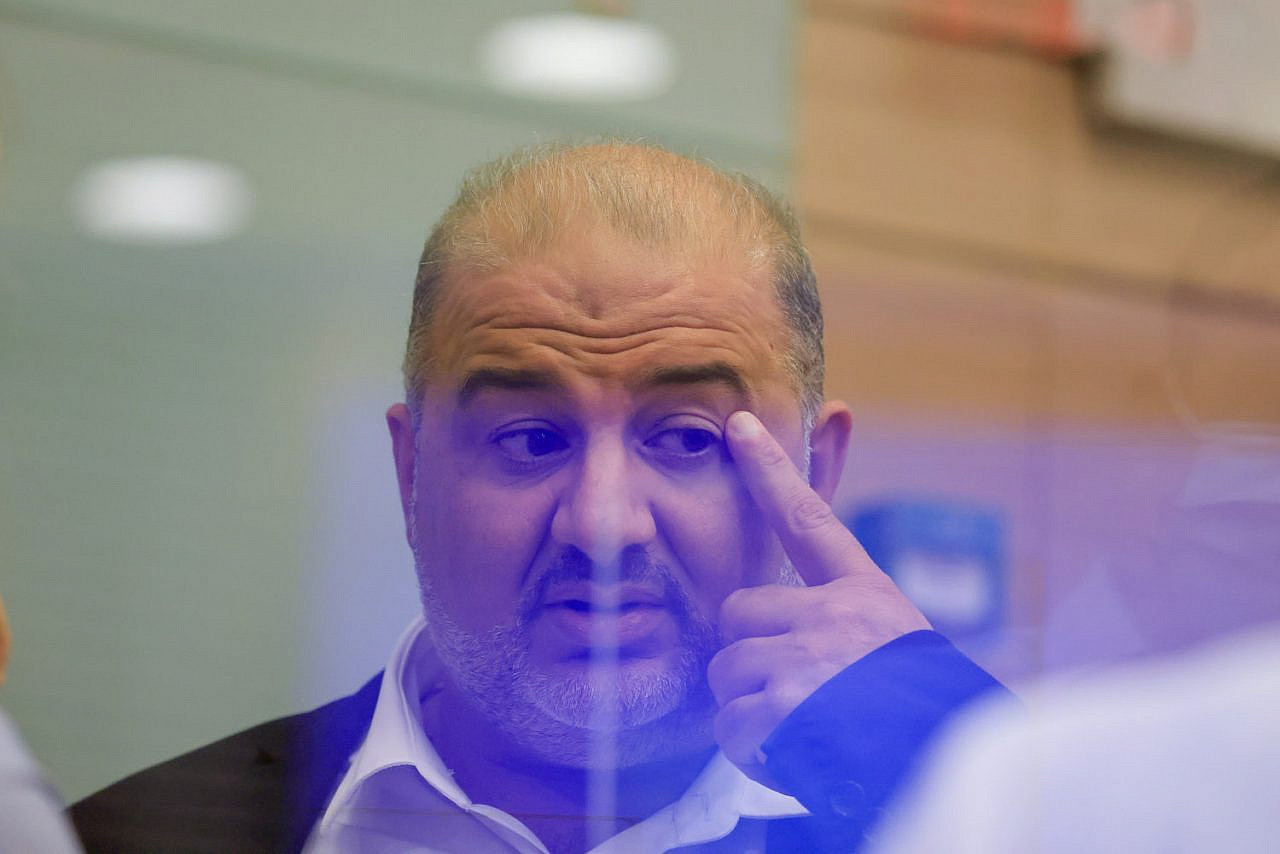
Contrary to its intentions, Israel’s policies of increasing work permits for Palestinians in Gaza, and turning a blind eye to undocumented Palestinian workers crossing into Israel from the West Bank, are not “shrinking the conflict.” Rather, the lack of Palestinian sovereignty and Israel’s unwillingness to negotiate the establishment of a border, together with the growth of the settlements, have connected the entire region under a single regime. The Abraham Accords, the pride of right-wing governments, turned the Palestinian question from a pan-Arab foreign policy matter into an internal Israeli problem.
These changes have come about primarily as a result of Israel’s own policies. The security establishment is not working to propose a different policy, but instead is able only to suggest how to maintain the status quo. The security forces may even have avoided pointing out the folly of the existing policy, given they are full partners in its design and execution.
The political system is in an ongoing crisis, both politically and in terms of its legitimacy. It is intellectually stagnant, blind, and lacking courageous leadership in the center and on the left. Will only total collapse bring about a change in policy?
This article was first published in Hebrew on Local Call. Read it here.

